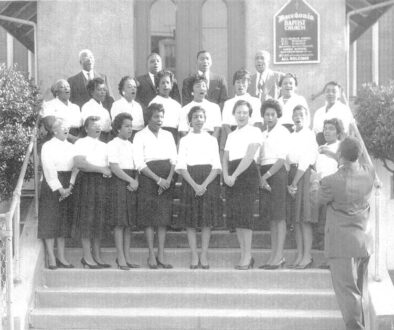Hail Caesar!
It’s rare that the history of a dish is more interesting than the dish itself. But that is precisely the case with Caesar salad. The salad itself is rather boring, consisting of lettuce, dressing, cheese, and croutons. Its origins, however, are another story.
First, let’s negate the myth that the salad has anything to do with Julius. It is highly doubtful that the conqueror ever ingested romaine lettuce, let alone Worcestershire sauce, which wasn’t developed until 1837. It wasn’t created in his honor either. Secondly, although it is by far the most popular salad in the U.S. and was hailed by the International Society of Epicures in Paris as the “greatest recipe to originate from the Americas in fifty years” it is not American. It’s not Italian either, not exactly.

It all started when a young man from Baveno, Italy immigrated to the United States as a steerage passenger aboard the RMS Olympic in 1913. Following in the footsteps of his three brothers (all of whom ended up in the hospitality business), Caesar opened his first restaurant in Sacramento in 1919. He then moved to San Diego where he opened another. However, Prohibition put a strain on business beginning in 1920. In an effort to escape the restrictions, he opened the first of several restaurants in Tijuana, Mexico which he called—wait for it—Caesar’s Restaurant.
The establishment was wildly successful as Americans were more than willing to drive 30 miles to enjoy fine food and drink. According to his daughter Rosa, the restaurant was overflowing with patrons on July 4, 1924, and provisions in Caesar’s pantry were running low. Necessity being the mother of invention, Cardini was prompted to concoct something out of what he had left—hence the Caesar salad was born.
That night, it consisted of just seven ingredients: romaine lettuce, a coddled egg, Italian olive oil, grated Parmigiano-Reggiano cheese, Worcestershire sauce, lime juice, and a slice of baguette. Prepared tableside, the “salad” was originally intended to be eaten with your fingers. The romaine leaves were left whole so you could pick them up by the stem and dip them in dressing.
Notice what is missing from the original. There is no garlic, no mustard and definitely no anchovies. According to UCHealth.org, “Mr. Cardini did not cotton to whole anchovies and considered the amount of anchovy (in essence, the level of umami) in Lea & Perrins Worcestershire sauce to suffice.” All the other stuff came later and at the hands of others, including his brother Alex who came to work at the restaurant a few years later.
The salad, like the restaurant itself, was a huge sensation and was soon copied by establishments in the U.S., especially in Los Angeles. Movie moguls and other famous people helped to spread the word. In fact, Mrs. Wallis Simpson, aka the Duchess of Windsor, is credited with helping the recipe to “cross the pond.” Julia Child remembers dining at Caesar’s restaurant with her parents in the mid-1920s, who were wildly excited to sample the new creation. By the way, Julia always stayed true to the original recipe which was given to her by Rosa Cardini herself.
After the repeal of prohibition and the enactment of a gambling ban in Mexico, Caesar Cardini returned to the states to focus on the trademarking and bottling of his famous dressing. After his death in 1956, Rosa continued the business until 1996 when she sold it to T. Marzetti Co., who still manufactures it today under the name Cardini’s Original Caesar Dressing.

This brings me to my number one pet peeve regarding bottled dressings—vinegar. Almost all of them (whether or not they are refrigerated) contain it—even the ones whose recipes don’t call for it. What you can buy today under the auspices of Cardini’s Original bears no resemblance to what people enjoyed on July 4th 1924. Take a look for yourself. Ingredients now include: soybean oil, water, white wine vinegar, parmesan cheese, egg yolk, distilled vinegar, salt, dehydrated garlic, spice, lemon juice concentrate, mustard seed, natural flavor, dehydrated onion, xanthan gum, corn syrup, potassium sorbate, anchovies, calcium disodium EDTA, celery seed, tamarind, and milk.
This salad should not come from a bag, a bottle, and a box. It’s easy to make from scratch and well worth the effort. Even if you use a modern recipe for the dressing, you only need six ingredients: olive oil, lemon juice, egg yolk, mustard, Worcestershire and anchovies (if you like them). Of course, you will toss the romaine with parmesan cheese and add some freshly ground black pepper. Add garlic if you must, but don’t overpower it. I prefer to infuse some butter with it and use it to toast my croutons.
Since this salad is so simple, the quality of your ingredients really counts. Start with fresh romaine. Cut off and discard the dark green floppy tops of the leaves. Cut the leaves into bite size pieces and wash them carefully. Dry them in a salad spinner or on layers of paper towels. You don’t want any water that remains on the leaves to dilute your dressing. Keep them cold while you continue the preparation.
Squeeze a fresh lemon. Don’t be tempted to use bottled or (heaven forbid) reconstituted juice. Grate some real Parmigiano-Reggiano cheese with a rotary grater or carefully shave it. But don’t grate it so fine that it is almost powder.
Caesar is the most popular salad in the United States today. It is ubiquitous. We can’t seem to get enough of it. In fact, our farmers produce almost 1.5 million tons of romaine each year in order to support our habit. We eat it for lunch, as an appetizer and upgrade it to entrée status by adding various kinds of protein. This simple salad has made its way onto all kinds of menus, from pizzerias to Peter Shields. Here in Cape May, we found it on more than 30 menus. I am particularly fond of the one served at Lucky Bones. I don’t know what they put in it, but it tastes authentic to me and the cheese is delicious.
Like Julia Child, I am a purist when it comes to this salad, but if you enjoy adventure, Louisa’s Café makes theirs with kale, as does Peter Shields, who adds frisée and chickpeas, and makes a dressing with roasted garlic. The Washington Inn adds radicchio, as does Oyster Bay. Ocean 7 tops it off with crispy prosciutto. For something really fun, visit Andrea Trattoria where you can even eat the bowl, which is made from toasted parmesan cheese! What a great way to celebrate the summer. Bon Appetit.

Classic Caesar Salad
Gather these ingredients
- 18 to 24 narrow romaine heart leaves
- 1 cup plain homemade croutons
- 1 large clove garlic peeled
- ¼ cup or more good quality olive oil
- Salt
- 1 large coddled egg
- Freshly ground black pepper
- 1 whole lemon halved and seeded
- Worcestershire sauce
- 2 Tbs. freshly grated Parmigiano-Reggiano cheese
Instructions
- For the Croutons: Crush the garlic with the flat side of a chef’s knife and sprinkle it with ¼ tsp. of salt. Mince well. Add about 1 tbs. of oil and mash with the knife, creating a soft puree. Warm the puree over medium heat with another tbs. of oil. Add the croutons and toss for a minute or two. For milder flavor, strain the puree to remove the large bits of garlic before adding the croutons.
- For the Salad: Drizzle 2 Tbs. of oil over the romaine and toss. Sprinkle with a generous pinch of salt and several grinds of pepper. Toss.
- Add the lemon juice and several drops of Worcestershire. Toss.
- Crack the egg and drop it right onto the romaine. Toss.
- Sprinkle on the cheese. Toss. Add the croutons. Toss again. Serve immediately.



